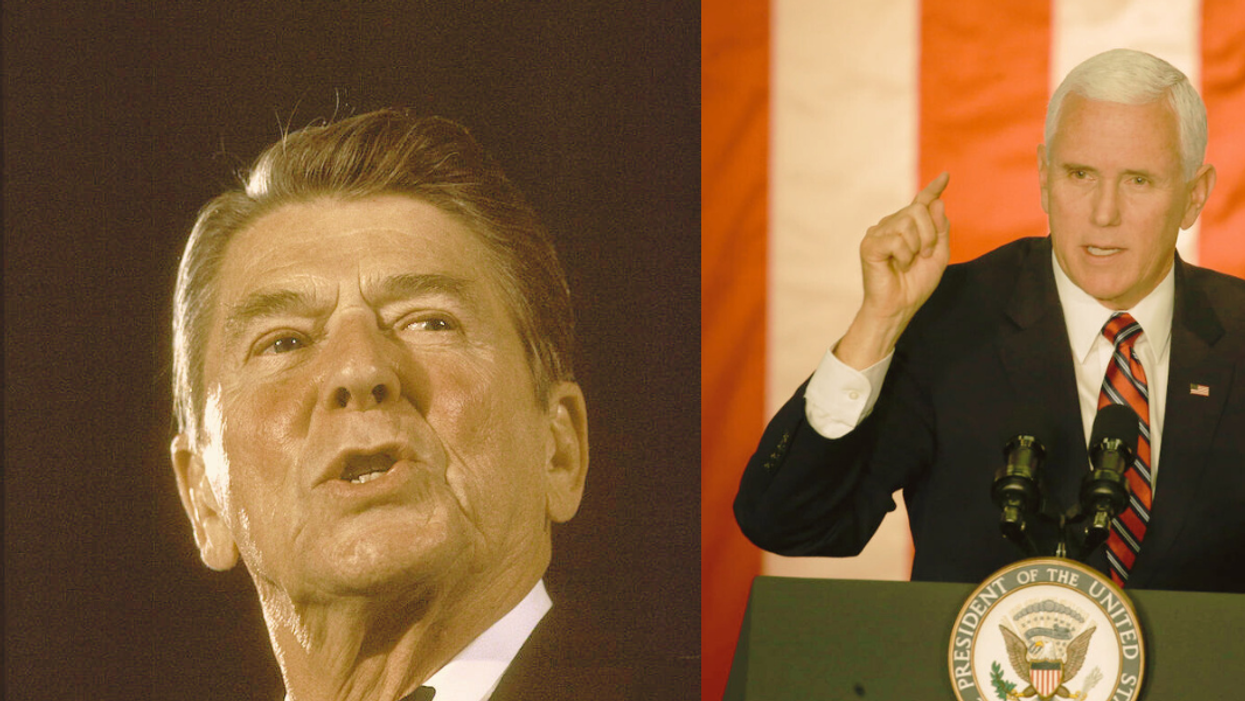William Natbony is an attorney and business executive specializing in investment management, finance, business law and taxation. He is the author of The Lonely Realist, a blog directed at bridging the partisan gap by raising questions and making pointed observations about politics, economics, international relations and markets.
Being a Conservative in 2023 does not have the same meaning as being a Conservative in the 1980s … or even as recently as in 2015 (when the Freedom Caucus was founded). Classical American Conservatism was grounded in the principles articulated by William F. Buckley and Ronald Reagan. It had three essential elements: fiscal restraint, a belief in traditional American values, and a strong internationalist focus on trade and national defense. Today’s politicians who label themselves as “conservatives'' adhere to a quite different philosophy.
Traditional fiscal conservatism (including that followed by think tanks like the Hoover Institution and the American Enterprise Institute) meant low taxes, modest government spending, balanced government budgets, and minimal government debt. It relied on a Darwinian approach to free markets whereby the government takes a back seat to capitalism, providing a limited, incentivized safety net for those at the bottom of the economic ladder. Because free markets are disruptive, they bring rapid change that maximizes growth at the expense of leaving late-adapters behind – including those whose jobs become obsolete by progress.
The Reagan Revolution had those consequences … and America, along with most Americans (though far from all), prospered. However, that is not the philosophy driving today’s political conservatives. Although fiscal conservatives today continue to adhere to a low-tax philosophy, they do so while increasing government debt, substituting it for business and individual obligations, larger deficits and propelling a centralized government coordination of economic activity that focuses on populism rather than fiscal probity (often referred to as Statism).
Traditional American Conservatism emphasized minimal interference by governments in the lives of Americans, strict Constitutional constructionism, and adherence to historical American family values. As President Reagan said, “Government’s first duty is to protect the people, not run their lives.” Today’s political conservatism nevertheless employs Federal and State activism to empower workers and other “stakeholders” to have a voice in corporate decision-making, provide government subsidies to encourage larger more home-focused families, limit abortion and sexual rights, control what may be taught at schools and offered by libraries, subsidize onshore manufacturing and business-development, and restrict immigration to prevent the wage-erosion of native-born Americans, all policies that exalt government in ways similar to the the Democratic Biden Administration. What was once a smaller-government Conservative mantra is now a bigger-government set of rallying cries that, surprisingly, are shared at various levels by both conservative Republicans and liberal Democrats.
The traditional Conservative approach to global issues relied on internationalism with a laser focus on national defense. Today, those are the policies of the Biden Administration. Today’s political conservatives instead have adopted America First isolationist, trade and tariff policies that were last popular in the 1930s when America believed itself safely insulated by Atlantic and Pacific Ocean distances.
Vivek Ramaswamy recently provided an example of this current foreign policy conservatism by advocating a solution to the Ukraine War inspired by former President Trump. If elected, he would require Putin to end his alliance with China in exchange for America’s commitment that NATO would never admit Ukraine. In doing so, he would endorse Russia’s annexation of parts of Ukraine as well as Russia’s intent to thereafter absorb the remainder. This approach (and a similar one he proposed for Taiwan) ignores appeasement history (for example, the 1938 Munich Agreement that consented to the dismemberment of Czechoslovakia). Traditional Conservatism recognizes that appeasing aggressors doesn’t work and accordingly endorses a strong defense founded on a globalist/internationalist foreign policy in reliance on democratically-centered alliances and a powerful military.
The practice of 21st Century “conservative” politicians is to articulate positions that emphasize ’80’s Conservative buzzwords without adopting traditionally Conservative policies. A majority of today’s “conservative” politicians offer a brand of populism designed to attract campaign dollars and maximize their odds of election. Unfortunately, perpetual electioneering with perpetual invective doesn’t enhance democracy or result in fiscal restraint, further traditional American values, or create a strong national defense. To the contrary, oppositional politicking leads to tribalism, extremism and internal strife. Labels of Conservative, Liberal, Republican and Democrat have mutated into electioneering slogans, shorn of their historical meanings.
Instead of pursuing Conservative policies, America’s current “conservatives” seem intent on being the party of opposition. However, “oppositional government” is not the same as “effective government.” Climate change provides a useful example of what a truly conservative agenda might accomplish. Traditional conservatism acknowledges realities and despite climate change deniers there is little argument amongst scientists that the planet indeed is warming. A core belief of traditional conservatism would find solutions void of big government programs and big government subsidies. A conservative response to global warming would include reducing burdensome government regulations that delay and often prevent the private development of energy alternatives. Similarly, rather than stigmatizing nuclear energy by treating it as a vote-killer, a Conservative energy agenda would promote an expedited national process to permit the construction of next-generation nuclear reactors. Doing so would encourage nuclear energy over coal- and gas-fired energy production admittedly a challenge for politicians from energy-producing States. Approaches of solving problems with less government intervention that foster a stronger capitalist economy used to be the cornerstones of Conservative philosophy.
Traditional Conservatives' perspective was on bettering government. The goal of today’s “conservative” politicians has become centered on election outcomes. That is terribly sad for America.


















